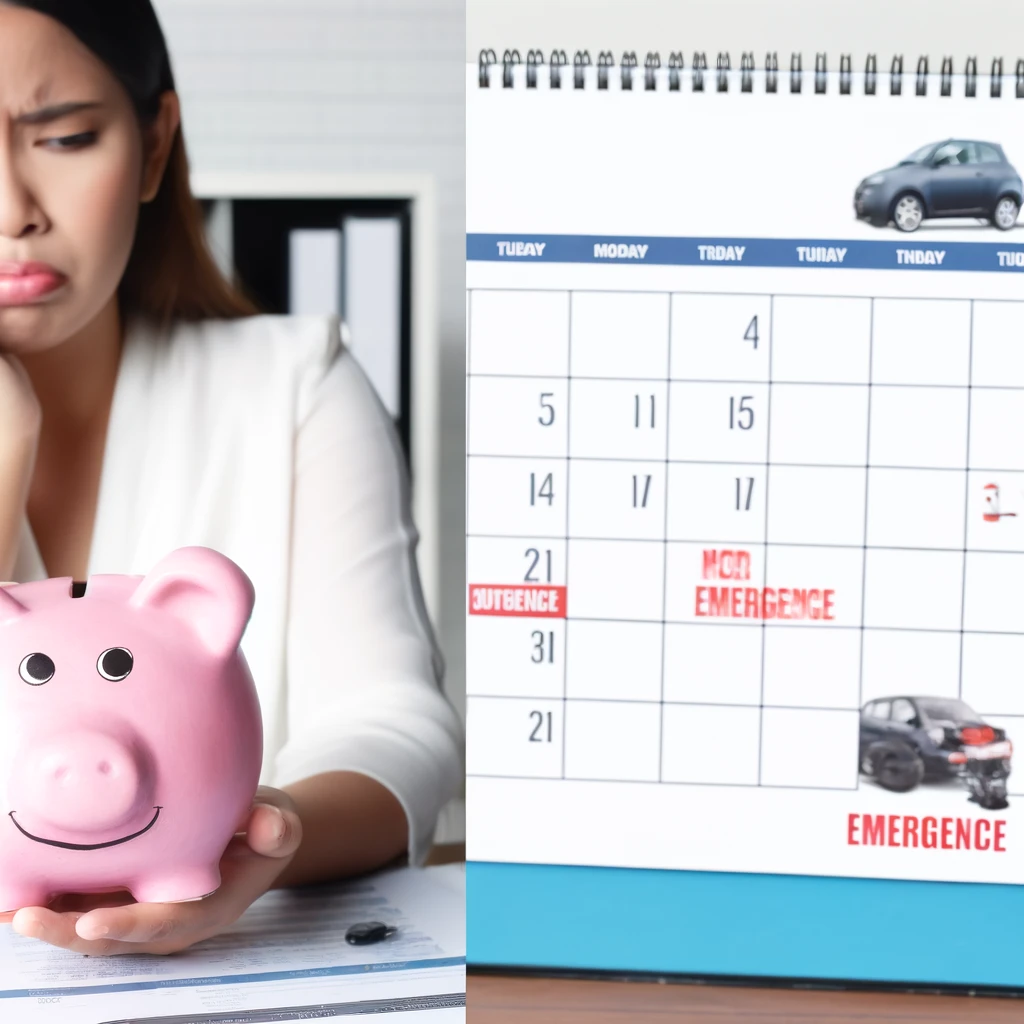Imagine working hard every day and earning a decent salary, but at the end of the month, you’re left wondering where all your money went. Or perhaps you’ve found yourself faced with an unexpected expense that you were not prepared for.
These scenarios are widespread and underscore the importance of mastering the basics of personal finance.
Personal finance is the art and science of managing your financial activities, such as income generation, planning, saving, investing, spending, and protecting your monetary resources.
Whether it’s buying a house, starting a business, or retiring, building a strong foundation in financial literacy will benefit you. However, it can be tricky and confusing. You’ve got to consider factors such as taxes, interest rates, inflation, risk, and market fluctuations.
Moreover, there are many typical money mistakes that people make when it comes to their money. And these blunders may cost a lot and jeopardise your economic structure. To illustrate, a shocking 63% of Brits do not keep a budget. This lack of planning leads to a snowball effect of monetary missteps.
Today, we’ll discuss five common mistakes to avoid in personal finance and how to fix them. By avoiding these issues, you improve your financial literacy, make better decisions, and achieve your goals.
“Money is only a tool. It will take you wherever you wish, but it will not replace you as the driver.”
Warren Buffett
Today’s Focus of Attention is reader-supported. We sometimes include products we think are useful for our readers. If you buy through links on this page, we may earn a small commission.
Mistake 1: Not Having a Budget

A budget is a plan that shows how much you earn, spend, and save each month. It helps you track your income and expenses, control your spending habits, and allocate your money.
Without a budget, you might overspend on things you don’t need, run out of cash before the end of the month, or miss important payments. You may also have no idea how much you are saving or investing in your future.
How to Fix It
1- List your sources of income as well as your fixed and variable expenses
- Fixed expenses are those that stay the same, such as rent, mortgage, or insurance. Variable expenses change, including food, clothing, entertainment, and travel.
2- Subtract your expenses from your income to get your net income (the money you have left after paying your bills)
- Your net income should be positive, meaning that you have more coming in than going out. If your bottom line is negative or too low, you need to grow your earnings or tighten your belt.
3- Increase your cash flow by asking for a raise, getting a side hustle, or selling your unwanted items
4- Reduce your expenses by cutting down on unnecessary spending, shopping around for better deals, or using coupons and discounts
Once you have your plan, stick to it. Use apps such as ‘You Need a Budget’, ‘Wally’, or ‘EveryDollar’ for that purpose.
“Live like no one else, so later you can live and give like no one else.”
Dave Ramsey
Mistake 2: Not Saving Enough
Setting aside part of your money helps you build an emergency fund, pay for large purchases or unexpected expenses, or achieve long-term goals such as buying a house or retiring. But many people don’t save the necessary or don’t save at all.
Around 34% of adults in the UK have either no savings or less than £1,000 in an account. In the US, only 39% of Americans have reserves to cover a $1,000 emergency expense. In 2023, almost a quarter (23%) of Brits had no cash at hand, an increase from 20% in 2022.
On top of that, about 27 million Brits would not be able to live off their savings for more than one month. And close to two-thirds (65%) believe they wouldn’t last three months without borrowing money. In America, the Federal Reserve said that 25% of Americans have no retirement funds.

How to Fix It
1- Set a specific and realistic goal
2- Decide how much you need to save every month
3- Set up a direct deposit from your pay cheque or a recurring transfer from your checking account to your savings account
4- Choose a high-yield savings account that pays more interest than a regular one
5- Increase your savings rate whenever you get a raise or a bonus
6- Avoid withdrawing from your emergency fund
“Beware of little expenses. A small leak will sink a great ship.”
Ben Franklin
Mistake 3: Not Investing With a Clear Vision

Investing is putting your money into assets that can generate income or appreciate in value over time. This move helps you grow your wealth faster than saving alone.
But most people don’t invest or put all their eggs in one basket. A few reasons are:
- They think it’s too risky, complicated, or expensive
- Not enough cash
- Lack of knowledge or confidence to make money decisions
- No clear investment strategy or goal
Common Investing Mistakes Are:
- Ploughing money into something you don’t understand or that doesn’t match your risk tolerance or time horizon
- Putting cash in the same assets, sectors, or markets
- Buying shares based on emotions, biases, or market noise
- Investing without monitoring your performance or adjusting your range of products as needed
Recognising these common pitfalls is the first step towards better financial management. Fortunately, with the right knowledge and a strategic approach, these challenges can be overcome.
How to Fix It
1- Define your investment goal and time horizon
2- Determine your risk tolerance and asset allocation
- Your risk tolerance is how much uncertainty you are willing to take with your money. Your asset allocation is how you divide your resources amongst different investments, such as stocks, bonds, cash, real estate, etc.
- Often, the higher the risk, the higher the return, but also the higher the potential loss.
3- Pick a platform
- You can invest through a broker, a robo-advisor, or a DIY solution, or choose between taxable, retirement, or education accounts.
4- Select your investment
- For instance, individual stocks, bonds, funds, ETFs, REITs, etc. Follow various strategies, such as value, growth, or dividend investing.
5- Diversify your portfolio
- Spread your money across different assets that have a low or negative correlation with each other. This helps you reduce your risk and volatility and increase your returns.
6- Rebalance your basket of products from time to time
- Adjust your asset allocation and investments to match your original plan or changing circumstances.
“Debt is like any other trap; easy enough to get into but hard enough to get out of.”
Henry Wheeler Shaw
Mistake 4: Not Managing Your Debt
Debt is the money that you owe to someone else. It’s useful when used with Solomon’s wisdom.
To illustrate, debt helps you buy a house or a car that you otherwise couldn’t afford; start or grow a business that generates income; or pay for education to increase your earning potential.
Nevertheless, a mountain of indebtedness is harmful when borrowed on a whim. For instance, it can cost you insane interest rates and fees, lower your credit score, and may affect your ability to borrow in the future. And let’s not forget the emotional impact.
Common Debt Mistakes Are:
- Taking on too much debt, exceeding your income, or repayment capacity
- High interests that accumulate faster than you can pay off
- Unnecessary debt that doesn’t add value to your life or finances
- Not paying off on time or in full
- Not having a debt-repayment plan

How to Fix It
1- Detail your debt
- List your obligations, including credit cards, mortgages, car, student, and personal loans.
- Note the total amount owed, the interest rate, the minimum monthly payment, and the due date.
2- Create a debt repayment plan
- Choose a strategy, such as the Debt Snowball Method (paying off liabilities from smallest to largest) or the Debt Avalanche (clear debts with the highest cost of borrowing first).
- Calculate how much extra you can afford to pay towards your debt each month and adjust your budget.
- Consider merging high-interest debts to lower the lending rate and simplify repayments.
3- Tools and resources
- Use debt repayment calculators or apps like Unbury.
- Seek advice from a financial advisor to optimise your strategy.
4- Find additional income sources
- Explore side gigs, freelance work, or selling unused items to pay down debts faster.
- Consider asking for a raise or looking for a higher-paying job.
5- Cut costs
- Be frugal with non-essential spending.
- Shop around for better rates on insurance or subscriptions.
6- Avoid accumulating more debt
- Resist the temptation to open new credit accounts or take out additional loans.
- Use cash or debit cards for everyday payments to avoid accruing more liabilities.
7- Build an emergency fund
- Aim to save at least three to six months’ worth of living expenses to cover unexpected costs without borrowing.
- Start with a small goal, like saving £1,000, then increase as your financial situation improves.
8- Educate yourself
- Read books, attend workshops, or take online courses on personal finance.
- Join a local or web-based community to share experiences and learn from others.
9- Check and adapt your strategy
- On a regular basis, review your budget, track your spending, and adjust your debt repayment plan as needed.
- Celebrate minor victories along the way to stay motivated.
“Debt is normal. Be weird.”
Dave Ramsey
Mistake 5: Not Protecting Your Wealth
Securing your assets is as crucial as building them. Without the proper safeguards in place, your hard-earned money can vanish because of unforeseen calamities, health issues, or fraudulent activities.

How to Fix It
1- Insurance coverage
This safety net is your financial protection against unpredictable life events. Primary types of insurance include health, life, property, auto, disability, long-term care, and identity theft.
2- Emergency Fund
An EF is a monetary buffer, helping you cover unexpected expenses without resorting to loans or credit cards. To build one:
- Set a goal: Aim for three to six months’ worth of living.
- Start small: Begin with a manageable target.
- Keep it accessible: Store your emergency fund in a savings account with a good interest rate, ensuring it’s within arm’s reach.
3- Identity theft protection
This shield is essential in the digital age to stop unauthorised access to your money. Bolster your defence with:
- Strong passwords: Create complex secret codes and change them every so often.
- Secure your devices: Install reputable security software on your phone, computer, and tablet.
- Be wary of phishing scams: Do not respond to unsolicited requests for your banking information.
Now that we’ve uncovered these common financial missteps and explored actionable solutions, you’re better equipped to steer clear of these pitfalls.
By shielding your assets, planning for emergencies, and protecting your identity, you can foster a robust economic foundation that will serve you well into the future. But remember that your journey towards monetary stability and freedom is a marathon, not a sprint, and every prudent step you take propels you further along this path.
The sooner you start, the better.
We hope you find this information useful. Please share your experiences and comments in the section below.


